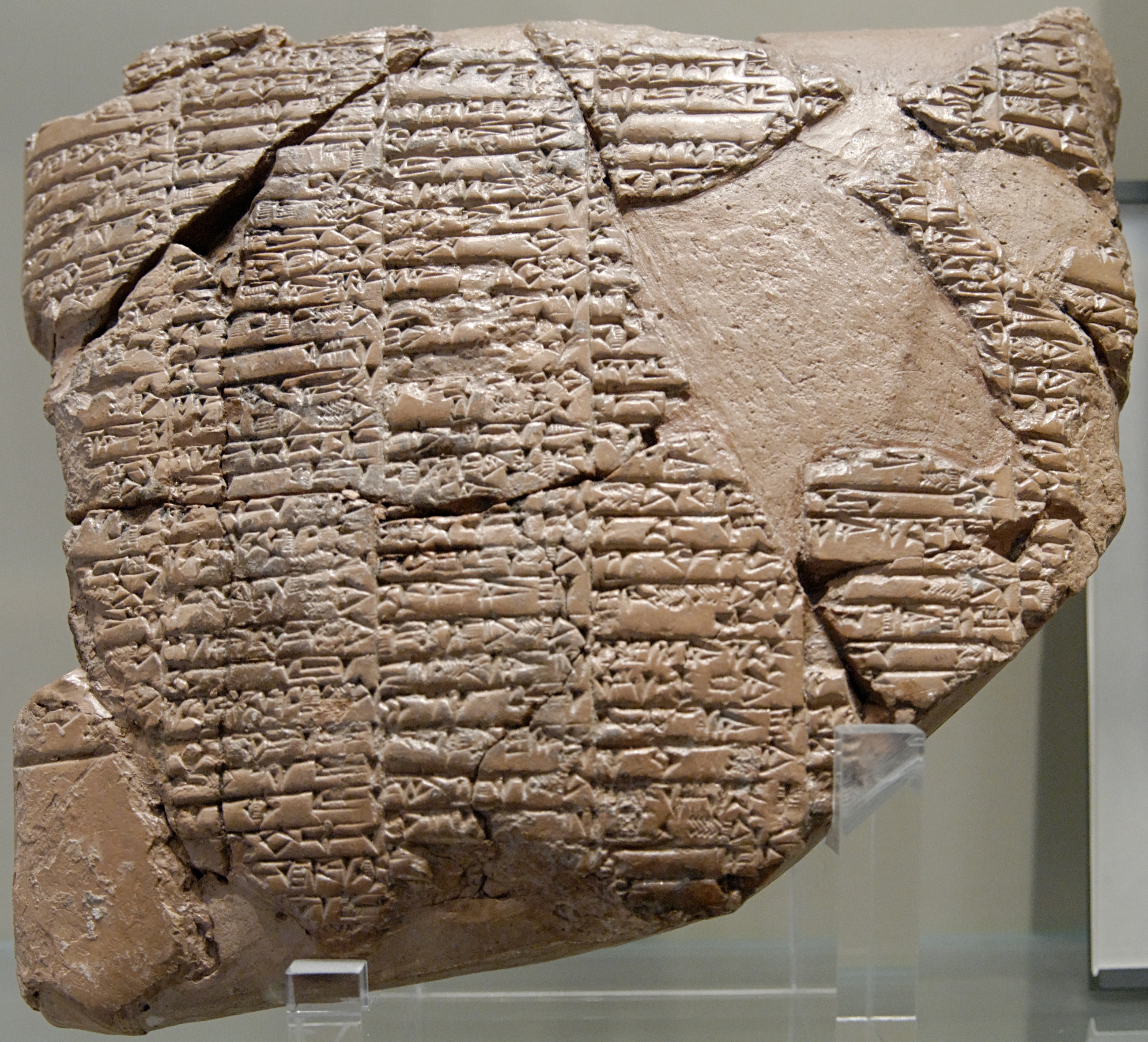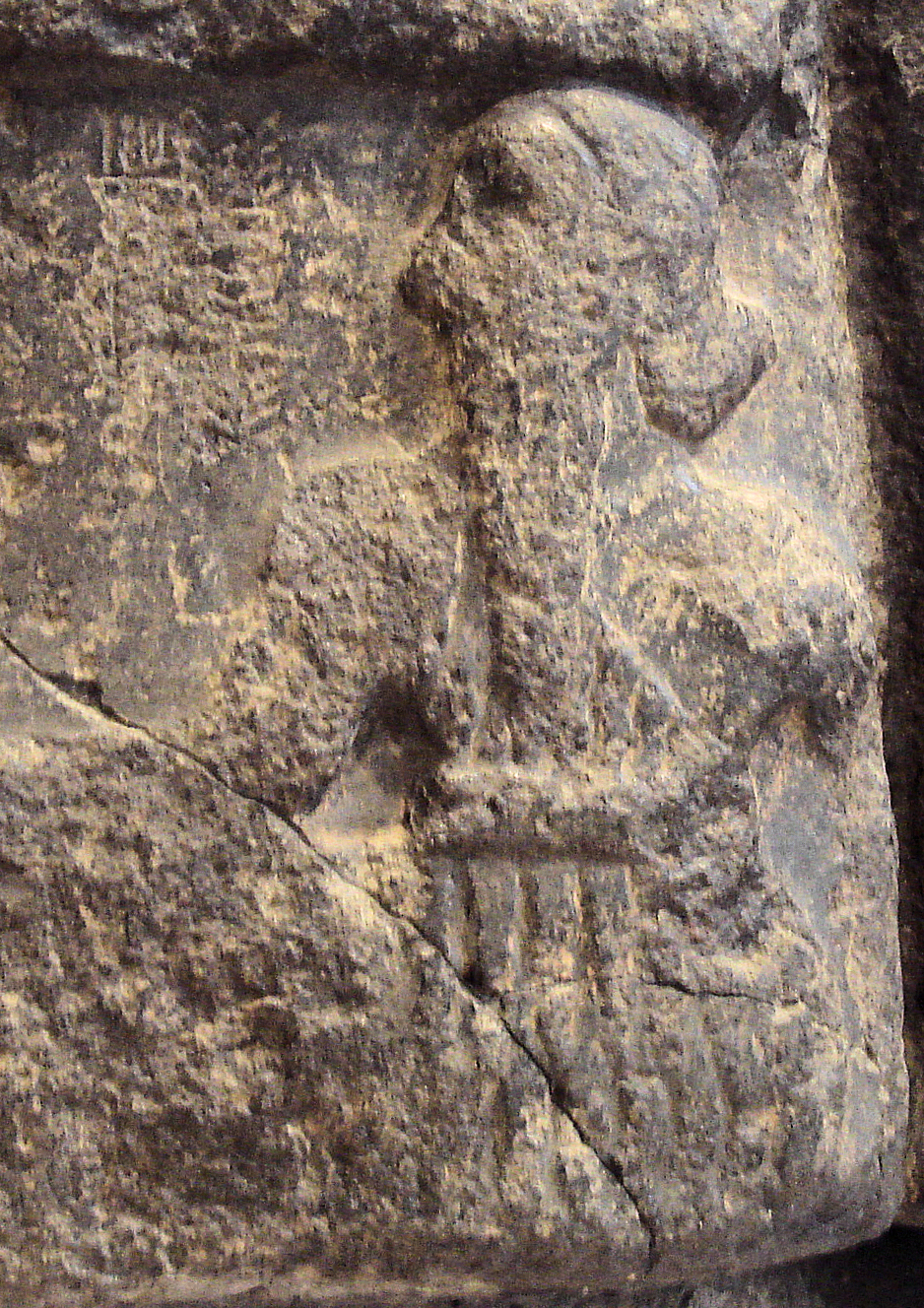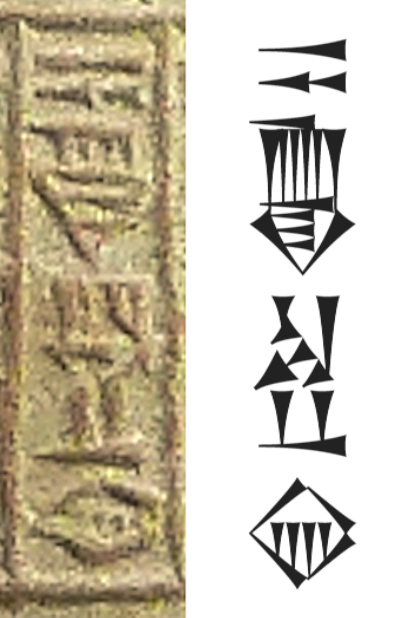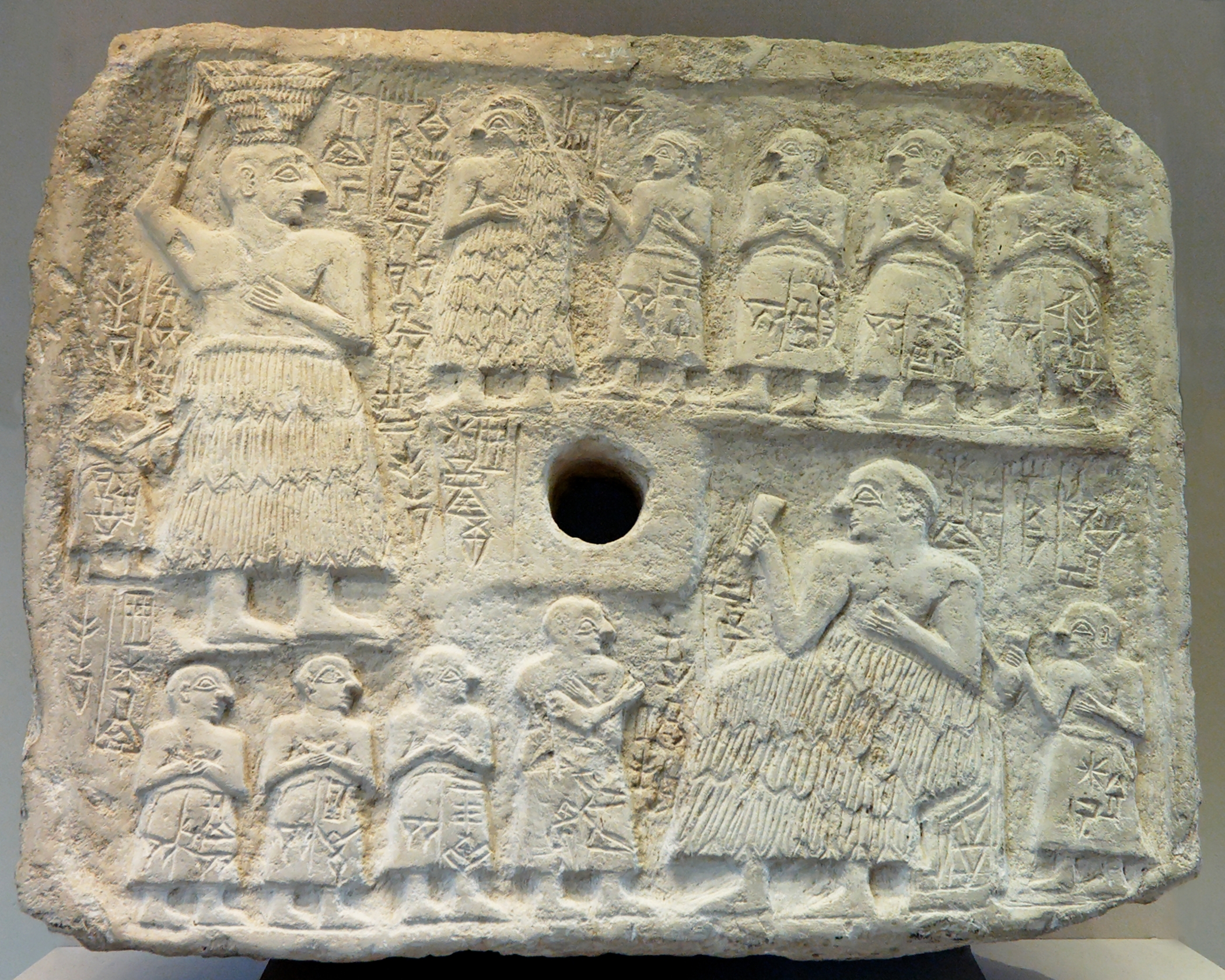|
Shar-kali-sharri
Shar-Kali-Sharri (, ''Dingir, DShar-ka-li-Sharri''; died 2193 BC) reigned c. 2218–2193 BC (middle chronology) as the ruler of Akkadian Empire, Akkad. In the early days of cuneiform scholarship the name was transcribed as "Shar-Gani-sharri". In the 1870s, Assyriologists thought Shar-Kali-Sharri was identical with the Sargon of Akkad, first ruler of the Akkadian Empire, but this identification was recognized as mistaken in the 1910s. His name was sometimes written with the leading Dingir sign demarking deification and sometimes without it. Clearly at some point he was deified and two of his designations marked his divine status, "heroic god of Akkade", and "god of the land of Warium". He was the son and successor of Naram-Sin of Akkad, Naram-Sin who deified himself during his lifetime.Thureau-Dangin, F., "Encore la Dynastie d'Agadé", Revue d'Assyriologie 9, pp. 81–83, 1912 Biography Shar-Kali-Sharri succeeded his father Naram-Sin of Akkad, Naram-Sin around 2218 BC. According ... [...More Info...] [...Related Items...] OR: [Wikipedia] [Google] [Baidu] |
Sharkalisharri Cuneiform
Shar-Kali-Sharri (, '' DShar-ka-li-Sharri''; died 2193 BC) reigned c. 2218–2193 BC (middle chronology) as the ruler of Akkad. In the early days of cuneiform scholarship the name was transcribed as "Shar-Gani-sharri". In the 1870s, Assyriologists thought Shar-Kali-Sharri was identical with the Sargon of Akkad, first ruler of the Akkadian Empire, but this identification was recognized as mistaken in the 1910s. His name was sometimes written with the leading Dingir sign demarking deification and sometimes without it. Clearly at some point he was deified and two of his designations marked his divine status, "heroic god of Akkade", and "god of the land of Warium". He was the son and successor of Naram-Sin who deified himself during his lifetime.Thureau-Dangin, F., "Encore la Dynastie d'Agadé", Revue d'Assyriologie 9, pp. 81–83, 1912 Biography Shar-Kali-Sharri succeeded his father Naram-Sin around 2218 BC. According to the Sumerian King List, his reign lasted 25 years, which i ... [...More Info...] [...Related Items...] OR: [Wikipedia] [Google] [Baidu] |
Shar-kali-sharri
Shar-Kali-Sharri (, ''Dingir, DShar-ka-li-Sharri''; died 2193 BC) reigned c. 2218–2193 BC (middle chronology) as the ruler of Akkadian Empire, Akkad. In the early days of cuneiform scholarship the name was transcribed as "Shar-Gani-sharri". In the 1870s, Assyriologists thought Shar-Kali-Sharri was identical with the Sargon of Akkad, first ruler of the Akkadian Empire, but this identification was recognized as mistaken in the 1910s. His name was sometimes written with the leading Dingir sign demarking deification and sometimes without it. Clearly at some point he was deified and two of his designations marked his divine status, "heroic god of Akkade", and "god of the land of Warium". He was the son and successor of Naram-Sin of Akkad, Naram-Sin who deified himself during his lifetime.Thureau-Dangin, F., "Encore la Dynastie d'Agadé", Revue d'Assyriologie 9, pp. 81–83, 1912 Biography Shar-Kali-Sharri succeeded his father Naram-Sin of Akkad, Naram-Sin around 2218 BC. According ... [...More Info...] [...Related Items...] OR: [Wikipedia] [Google] [Baidu] |
Lugal-ushumgal
Lugal-ushumgal (, ''lugal-ušumgal''; died 2210 BC) was a Sumerian ruler ( ensi, formerly read "Patesi") of Lagash ("Shirpula"), BC. Several inscriptions of Lugal-ushumgal are known, particularly seal impressions, which refer to him as governor of Lagash and at the same time a vassal (, ''arad'', "servant" or "slave") of the Akkadian Empire rulers Naram-Sin and his successor Shar-Kali-Sharri. It can be considered that Lugalushumgal was a collaborator of the Akkadian Empire, as was Meskigal, ruler of Adab. He was succeeded by Puzer-Mama who achieved independence from Shar-Kali-Sharri, assuming the title of "King of Lagash" and starting the illustrious Second Dynasty of Lagash. Seal of Lugalushumgal as vassal of Naram-sin The seal depicts a presentation scene of governor Lugal-ushumgal to a male deity. Lugal-ushumgal is shown standing to the left, carrying an animal offering for the deity. The inscription carries two blocks of columns: File:Lugal-ushumgal servant of ... [...More Info...] [...Related Items...] OR: [Wikipedia] [Google] [Baidu] |
Naram-Sin Of Akkad
Naram-Sin, also transcribed Narām-Sîn or Naram-Suen (: '' DNa-ra-am D Sîn'', meaning "Beloved of the Moon God Sîn", the "𒀭" a determinative marking the name of a god; died 2218 BC), was a ruler of the Akkadian Empire, who reigned –2218 BC ( middle chronology), and was the third successor and grandson of King Sargon of Akkad. Under Naram-Sin the empire reached its maximum extent. He was the first Mesopotamian king known to have claimed divinity for himself, taking the title "God of Akkad", and the first to claim the title " King of the Four Quarters". His military strength was strong as he crushed revolts and expanded the empire to places like Turkey and Iran. He became the patron city god of Akkade as Enlil was in Nippur. His enduring fame resulted in later rulers, Naram-Sin of Eshnunna and Naram-Sin of Assyria as well as Naram-Sin of Uruk, assuming the name. Biography Naram-Sin was a son of Manishtushu. He was thus a nephew of King Rimush and grandson of Sarg ... [...More Info...] [...Related Items...] OR: [Wikipedia] [Google] [Baidu] |
Puzer-Mama
Puzer-Mama or Puzur-Mama (, ''puzur4- Dma-ma''; died 2200 BC) was a ruler of Lagash before Gudea. Though he adopted the title of King ('' lugal''), Puzer-Mama shows kinship with future Lagashite governors ('' ensi'') in the religiosity of his inscriptions. He took control of Lagash during Shar-Kali-Sharri's reign, when troubles with the Guti left the Sargonic king with only "a small rump state whose center lay at the confluence of the Diyala and Tigris river." (Frayne 1993 p. 186) Puzer-Mama's royal inscription — wherein he receives the various gifts of the gods appropriate to rulership: power by Ningirsu, intelligence by Enki, and position by Inanna, (Frayne 1993 p. 272) — may be contrasted with the contemporary religious element in Shar-kali-sharri's various inscriptions: a call for the gods to punish any who alter his inscriptions, and specifically to "tear out his foundations and destroy his progeny" (one of a number of curses for protection found in ... [...More Info...] [...Related Items...] OR: [Wikipedia] [Google] [Baidu] |
Akkadian Empire
The Akkadian Empire () was the first known empire, succeeding the long-lived city-states of Sumer. Centered on the city of Akkad (city), Akkad ( or ) and its surrounding region, the empire united Akkadian language, Akkadian and Sumerian language, Sumerian speakers under one rule and exercised significant influence across Mesopotamia, the Levant, and Anatolia, sending military expeditions as far south as Dilmun and Magan (civilization), Magan (modern United Arab Emirates, Saudi Arabia, Bahrain, Qatar and Oman) in the Arabian Peninsula.Mish, Frederick C., Editor in Chief. "Akkad" ''iarchive:webstersninthne000merr, Webster's Ninth New Collegiate Dictionary''. ninth ed. Springfield, MA: Merriam-Webster 1985. ). The Akkadian Empire reached its political peak between the 24th and 22nd centuries BC, following the conquests by its founder Sargon of Akkad. Under Sargon and his successors, the Akkadian language was briefly imposed on neighboring conquered states such as Elam and Guti ... [...More Info...] [...Related Items...] OR: [Wikipedia] [Google] [Baidu] |
List Of Kings Of Akkad
The king of Akkad (Akkadian language, Akkadian: , ) was the ruler of the city of Akkad (city), Akkad and Akkadian Empire, its empire, in Ancient Near East, ancient Mesopotamia. In the 3rd millennium BC, from the reign of Sargon of Akkad to the reign of his great-grandson Shar-Kali-Sharri, the Akkadian Empire represented the dominant power in Mesopotamia and the first known great empire. The empire would rapidly collapse following the rule of its first five kings, owing to internal instability and Gutian dynasty of Sumer, foreign invasion, probably resulting in Mesopotamia re-fracturing into independent city-states, but the power that Akkad had briefly exerted ensured that its prestige and legacy would be claimed by monarchs for centuries to come. Ur-Nammu of Ur, who founded the Neo-Sumerian Empire and reunified most of Mesopotamia, created the title "King of Sumer and Akkad" which would be used until the days of the Achaemenid Empire. History Although Sargon of Akkad is often ... [...More Info...] [...Related Items...] OR: [Wikipedia] [Google] [Baidu] |
Akkad (city)
Akkad (; also spelt Accad, Akkade, a-ka₃-de₂ki or Agade, Akkadian: , also URI KI in Sumerian during the Ur III period) was the capital of the Akkadian Empire, which was the dominant political force in Mesopotamia during a period of about 150 years in the last third of the 3rd millennium BC. Its location is unknown. In the early days of research various unidentified mounds were considered as the location of Akkad. In modern times most of the attention has focused on an area roughly defined by 1) near Eshnunna, 2) near Sippar, 3) not far from Kish and Babylon, 4) near the Tigris River, and 5) not far from the Diyala River – all within roughly 30 kilometers of modern Baghdad in central Iraq. There are also location proposals as far afield as the Mosul area in northern Iraq. The main goddess of Akkad was Ishtar-Annunitum or ''‘Aštar-annunîtum'' (Warlike Ishtar), though it may have been a different aspect, Istar- Ulmašītum. Her husband Ilaba was also revered. Is ... [...More Info...] [...Related Items...] OR: [Wikipedia] [Google] [Baidu] |
Lagash
Lagash (; cuneiform: LAGAŠKI; Sumerian language, Sumerian: ''Lagaš'') was an ancient city-state located northwest of the junction of the Euphrates and Tigris rivers and east of Uruk, about east of the modern town of Al-Shatrah, Iraq. Lagash (modern Al-Hiba in Dhi Qar Governorate) was one of the oldest cities of the Ancient Near East. The ancient site of Nina (Tell Zurghul) is around away and marks the southern limit of the state. Nearby Girsu (modern Telloh), about northwest of Lagash, was the religious center of the Lagash state. The Lagash state's main temple was the E-ninnu at Girsu, dedicated to the god Ningirsu. The Lagash state incorporated the ancient cities of Lagash, Girsu, Nina. History Though some Uruk period pottery shards were found in a surface survey, significant occupation at the site of Lagash began early in the 3rd Millennium BC, in the Early Dynastic Period (Mesopotamia), Early Dynastic I period (c. 2900–2600 BC), surface surveys and excavations show tha ... [...More Info...] [...Related Items...] OR: [Wikipedia] [Google] [Baidu] |
Nippur
Nippur (Sumerian language, Sumerian: ''Nibru'', often logogram, logographically recorded as , EN.LÍLKI, "Enlil City;"I. E. S. Edwards, C. J. Gadd, N. G. L. Hammond, ''The Cambridge Ancient History: Prolegomena & Prehistory'': Vol. 1, Part 1, Cambridge University Press, 1970 Akkadian language, Akkadian: ''Nibbur'') was an ancient Sumerian city. It was the special seat of the worship of the Sumerian god Enlil, the "Lord Wind", ruler of the Ancient Near Eastern cosmology , cosmos, subject to Anu, An alone. Nippur was located in modern Nuffar 5 miles north of modern Afak, Al-Qādisiyyah Governorate, Iraq. It is roughly 200 kilometers south of modern Baghdad and about 100 km southeast of the ancient city of Babylon. Occupation at the site extended back to the Ubaid period (Ubaid 2 – Hajji Muhammed), the Uruk period, and the Jemdet Nasr period. The origin of the ancient name is unknown but different proposals have been made. History Nippur never enjoyed political hegemony in its ... [...More Info...] [...Related Items...] OR: [Wikipedia] [Google] [Baidu] |
Igigi Of Akkad
Igigi (died 2192 BC), according to the ''Sumerian King List'', was one of four rivals (the others being Ilulu, Imi, and Nanum) vying to be king of the Akkadian Empire during a three-year period following the death of Shar-kali-sharri. Thorkild Jacobsen, ''The Sumerian King List'' (Chicago: University of Chicago Press, 1939), pp. 112-115 This chaotic period came to an end when Dudu consolidated his power over the realm. See also *List of Mesopotamian dynasties * History of Mesopotamia The Civilization of Mesopotamia ranges from the earliest human occupation in the Paleolithic period up to Late antiquity. This history is pieced together from evidence retrieved from archaeological excavations and, after the introduction of writ ... References {{Early Rulers of Mesopotamia 22nd-century BC kings of Akkad Akkadian people 23rd-century BC births 22nd-century BC deaths ... [...More Info...] [...Related Items...] OR: [Wikipedia] [Google] [Baidu] |






